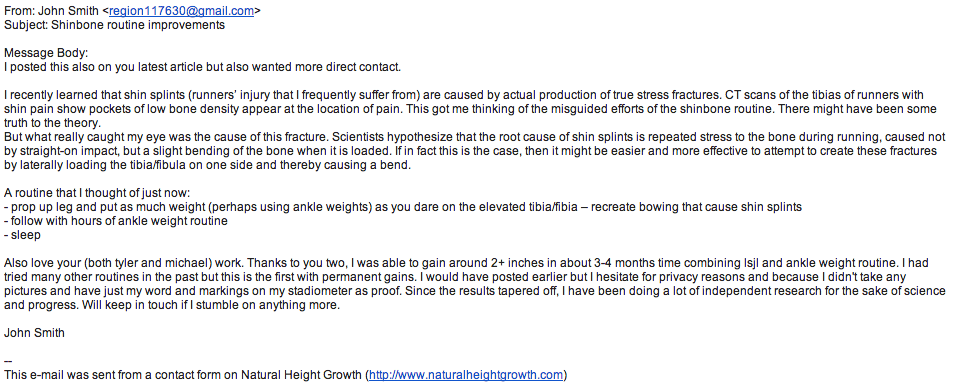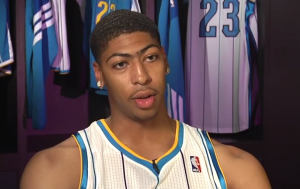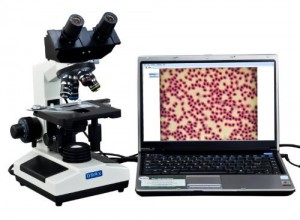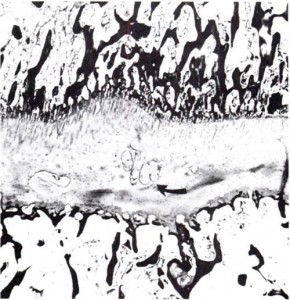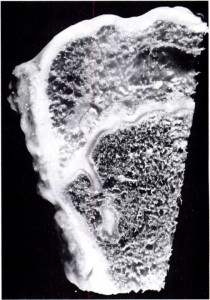Shin Splints Induces Shear Stress Fracture Of Tibia Periosteum – Can it Induce Pseudoepiphyseal Cartilage Tissue Generation?
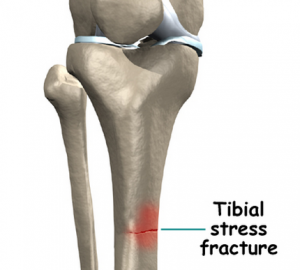 A recent message given to the website email made me look into an idea which has been explored already at least a dozen times by Tyler and Sky before him. The idea of purposefully inducing stress microfractures to make the bones weaker in some areas for stretching is an attractive (but superficial) idea which has caused multiple height increase enthusiasts in the past decade to put themselves through intense pain to get results.
A recent message given to the website email made me look into an idea which has been explored already at least a dozen times by Tyler and Sky before him. The idea of purposefully inducing stress microfractures to make the bones weaker in some areas for stretching is an attractive (but superficial) idea which has caused multiple height increase enthusiasts in the past decade to put themselves through intense pain to get results.
This message given to us really brought some old ideas back out so that they can be looked at again. It shows that maybe the old ideas can be combined with the new ideas that we have found to make it work.
(Note: I am fully aware that some of the messages we get from the readers may be completely fake or just a joke to make us do extra research but I will humor most of them. As long as an idea is some what reasonable, I will be willing to put in a few hours to do some extra research to see how valid an idea would be. Spam is something I don’t consider, but some messages have ideas that are quite interesting. The readers and the people who message us sometimes gives really interesting new ideas and perspectives which we never considered.)
I messaged him and he gave a couple of follow-up messages.
The messages are small but the key facts are…
This guy started doing the LSJL routine when he was 20, achieve a full inch of height growth within 1 month, grew 1/2 an inch in the 2nd month, and the gains decreased until he had reached a full 2inches of height increase. He is now 21 and he is reasonably sure that his growth plates were fused. He had noticed no growth since the age of 15 but after he started doing the routines he started to notice results almost immediately.
The ankle weights he is using is around 17 lbs and the spots he would squeeze would be the tibia and the femur. The duration of the clamping would be over 30 minutes. After he started to notice no more gains in height after maybe the 3-4 months, he increased the clamping and the ankle weights but there has been no results so far.
We note early on that this guy claimed that he increased his height by over 2 inches using a combination of LSJL with ankle weights. That would be already an interesting message, but his other note about how runners suffer a high level of shin fractures started to make me wonder about something else.
He said that shin splints are caused by true stress fractures. That seems to be true. His claim that CT scans of tibia on runner’s legs may be slightly off. I believe he meant to say X-Ray. If it is indeed CT, then it might be much more serious than I believed. CT scans look into the body through a series of cross sectional slices allowing for images of tissue across a planar section of the body to be seen. X-Rays can only show you the outline of the bones and other hard tissues (ie tumors and cysts). So when the doctors took their radiological images of the leg, it was revealed that the stress fractures in the tibia of runners was where the bone density was low! That is a key point.
When medical researchers tried to figure out what was the cause for runners to develop fractures in the tibia, they concluded that the stress fractures came from when the bones were BENT, so it seems that the way to get fractures is to laterally load the bone.
He has been taking Calcium, VItamin D, SAM-e, Iodine, and Astralagus, but I am not sure they are worth it unless one is suffering from very low bone density. I suggest no need to get those supplements unless you are trying to get some other type of use from them.
This claim about just putting weight to the side of a bone to create stress fractures, which would be areas of lower bone density started to get me wondering. I had to do some reading on what the Medical Literature actually said about Shin Splint, or more accurately Medial Tibial Stress Syndrome (Wikipedia Article).
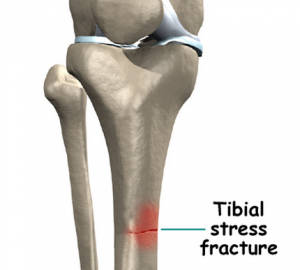 What I found may be a huge key to the next step in our research. I looked for pictures to see what it would look like in an X-Ray or CT and what I found was almost a pseudoepiphyseal cartilage like tissue developing, at least from a radiological perspective to my amateur researcher untrained eye.
What I found may be a huge key to the next step in our research. I looked for pictures to see what it would look like in an X-Ray or CT and what I found was almost a pseudoepiphyseal cartilage like tissue developing, at least from a radiological perspective to my amateur researcher untrained eye.
Do you see the picture to the right? It looks like a horizontal cut across the bone. It is called a Tibial Stress Fracture, aka from Shear Stress causing a slight bend in the bone. The fracture however, does NOT cut through the entire bone, but slices through the periosteum layer. That was something which I proposed in the Youtube video Chisel & Hammer Method I uploaded about a year ago which had a huge response. That was my first attempt at altering the LSJL method to have a greater chance of success. I had written about it in the post “The Chisel And Hammer Supplement Technique Explained Through Video“. Both Tyler and me had found from at least 2 old studies done in the late 19 century and early 20th century by a couple of surgeons that if you removed the periosteum by peeling a layer off, the long bones seemed to grow faster longitudinally. I wrote about it in the post “A New Proposed Height Increase And Grow Taller Method From Periosteum Removal (Breakthrough)” and “An Alternative Explanation On Why The LSJL May Actually Help People With Closed Growth Plate Increase Height And Grow Taller (Big Breakthrough!)” and he wrote about in the post “Periosteal Stripping“. The study was called “A PROCEDURE FOR STIMULATION OF LONGITUDINAL GROWTH OF BONE An Experimental Study“
So instead of using a hammer and chisel to damage the layer of cambium stem-like cells in the inner layer of periosteum, it has been induced from just running and the bending of the lower leg by runners.
So what this guy has done was a slight variation to the LSJL technique, which is to induce horizontal fractures from loading ankle weights while having his legs elevated. He combines the ankle weights with LSJL.
In a recent post I had manage to almost confirm and proved that LSJL does indeed work, since the subchondral layer below the articular cartilage is thin enough where if you squeezed from the sides (or in the angular area, which is where I believe should be the actual area) microfractures on the surface of the subchondral bone layer would develop, pushing the progenitor mesenchymal stem cells out of from the inside of the epiphysis/long bone head bulb into the bottom layer of the articular cartilage, turning the cels into chondrocytes, which then go into columnar formation (which is already visible in the articular cartilage), and then depositing on the bottom elevating the cartilage upwards, thus increasing a person’s height. You can read that post entitled “Cyclic Mechanical Shear Compression Induces Progenitor Mesenchymal Stem Cells Towards Chondrogenesis – Breakthrough!“.
So we have a few things we can go off of right now.
- LSJL does seem to work, but it is minimal.
- Runners sometimes develop shin splints.
- Those shin splints are actually shear/lateral stress fracture.
- The X-Ray on the fracture shows an area of low bone density, which is what we want.
- Stress fracture means at least the periosteum has been cut, which a couple of studies show helps long bones grow longer faster.
This person who used to be a runner and often got stress fractures gained two inches in height, using a combination of ankle weights used to bend their tibia/fibula and LSJL. Another person recently came forward to say that they got half a cm from using ankle weights, but their technique was to use the ankle weights until it became unbearably painful for them.
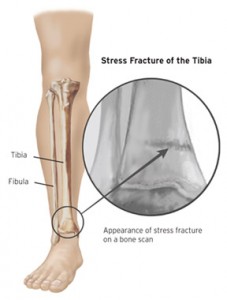 If we looked at the picture, it almost looks like the stress fracture is like a new epiphyseal cartilage layer, but it doesn’t go completely through the bone.
If we looked at the picture, it almost looks like the stress fracture is like a new epiphyseal cartilage layer, but it doesn’t go completely through the bone.
It scratches the bone enough to cut through one layer. I don’t think that a shin splint would ever be as much as also cracking the cortical bone layer, because that would require real medical treatment with splints used to hold the bones into place.
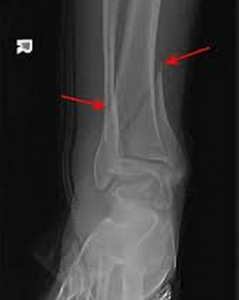 I had written before about a very similar idea, that maybe there might be a slight causal nature (not just correlative) between people who play basketball and a slightly increased height growth rate. The nature of basketball means a lot of short bursts of running, following by jumping, which I had theorized caused microfractures in the developing person’s epiphyseal area. If their cartilage was about to be ossified, a fracture along the epiphyseal cartilage would keep that area un-ossified for a little bit longer, giving people who played basketball from an early age maybe 1-2 more months of growing time. Before, I wrote an old post Available Here which I said that there was no relations between basketball playing and the kid becoming slightly taller than their peers, but I reversed that idea after I started to really looking into how jumping over and over again in say a basketball (or even volleyball) type of athletics could cause the growth plates and cartilage like tissue to stay un-ossified for slightly longer.
I had written before about a very similar idea, that maybe there might be a slight causal nature (not just correlative) between people who play basketball and a slightly increased height growth rate. The nature of basketball means a lot of short bursts of running, following by jumping, which I had theorized caused microfractures in the developing person’s epiphyseal area. If their cartilage was about to be ossified, a fracture along the epiphyseal cartilage would keep that area un-ossified for a little bit longer, giving people who played basketball from an early age maybe 1-2 more months of growing time. Before, I wrote an old post Available Here which I said that there was no relations between basketball playing and the kid becoming slightly taller than their peers, but I reversed that idea after I started to really looking into how jumping over and over again in say a basketball (or even volleyball) type of athletics could cause the growth plates and cartilage like tissue to stay un-ossified for slightly longer.
So here is what I think is a huge leap forward in the research. We reveal another key to the research.
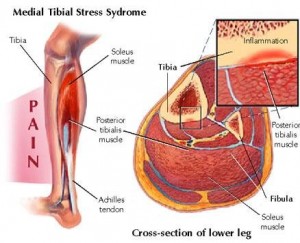 LSJL works at a very small scale, but it can be enhanced if you can cut through the periosteum. That can be done through shin splints. This former runner, who has a history of getting horizontal fractures seems to be the person who has gotten the most results ever from LSJL, and I theorize the reason is because they have had a few horizontal fractures, like in the pictures.
LSJL works at a very small scale, but it can be enhanced if you can cut through the periosteum. That can be done through shin splints. This former runner, who has a history of getting horizontal fractures seems to be the person who has gotten the most results ever from LSJL, and I theorize the reason is because they have had a few horizontal fractures, like in the pictures.
So it is a combination of not just 1, or even 2 critical points, but 3 key points.
- Key Point #1: The loading area for the clamps needs to be in the angular area.
- Key Point #2: You need to create stress fractures, like I had suggest in the Chisel and Hammer Method. It might be safer to do that by doing a lot of running, like cross-country. Stress fractures decrease bone density across a slice of area in the bone.
- Key Point #3: Use Ankle Weights along with LSJL. So far, in recent months, two people have come forward saying that they have gotten results using ankle weights.
The induced horizontal fractures suggest that maybe even the cortical bone layer is weakened, as the X-rays showed a dramatic drop in bone density in that area.
Bones don’t actually heal but require either the bone marrow liquid or the periosteum inner cambium layer of stem cells to seep into the fractured area to turn into a fibrocartilage type pre-bone tissue, before converting into bone tissue.
If the shin splints are large enough in the right location of the metaphyseal-epiphyseal area, you can temporarily form a fibrocartilage half-layer across the tibia bone, and using LSJL, you can get the progenitor cells in the fibrocartilage in the filled fracture gap to turn completely chondrogenic, creating a temporary micro-growth plate, which you can expand and stretch out. That is how I believe this runner has been able to get more results than anyone else has from LSJL!
Here is what you as the reader should take away.
Doing just one routine or technique is not enough, but at least two different techniques at the same time. Thinking back on this idea, with 20/20 perspective it actually makes a lot of sense.
The idea of putting weight on your lower legs to stress fractures on your tibia is scary, but long distance running seem to cause them regularly so you don’t need to be cracking your own leg’s bones just yet. After running, do LSJL to get the fractures induced filled with progenitor cells which will differentiate into chondrocytes.
Put on the ankle weights (upwards of 20 lbs) to stretch out the fractures after running. After 4-6 months, one is most likely going to see results, around maybe 1-2 cms at most. (You can get a pair of rather cheap ankle weights Available Here)

